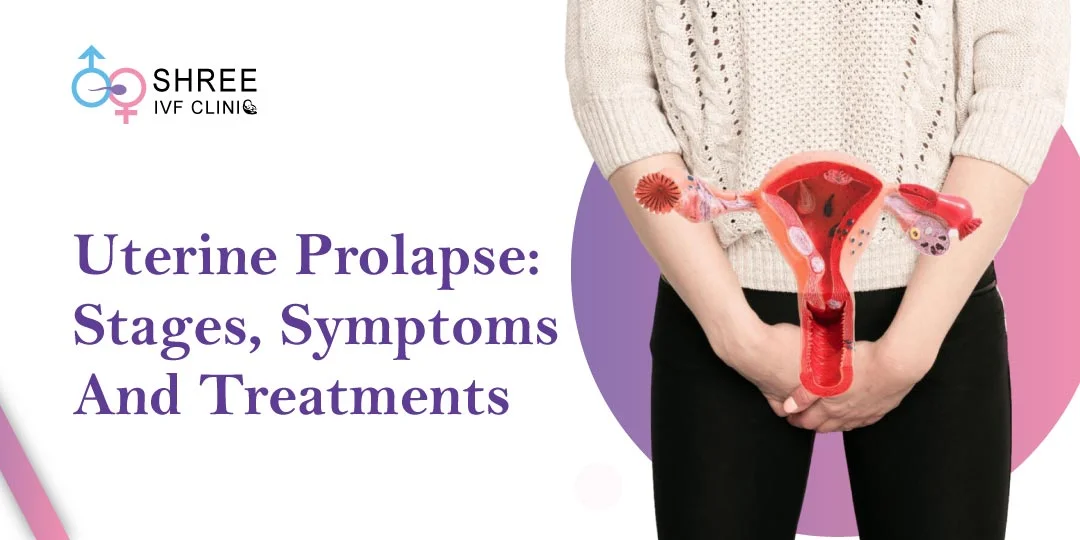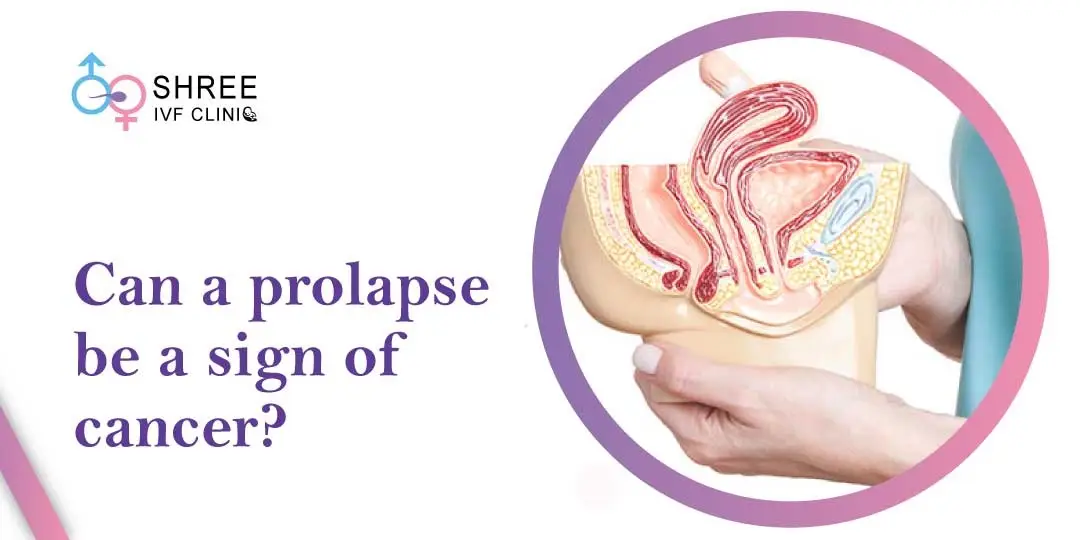Understanding Uterine Prolapse: Stages, Symptoms, and Treatments
UPDATED ON 15 SEP. 2023
Welcome to our comprehensive guide on uterine prolapse, which affects many women in India and can significantly impact their daily lives.
We understand the importance of clearly understanding this condition, its stages, symptoms, and available treatments.
Our goal is to provide you with the knowledge and empowerment to make informed decisions about your health.

AUTHOR
Dr Jay Mehta
Scientific Director & IVF Specialist with 10+ years of experience
TREATMENT
CONDITION
GET IN TOUCH ON
What is Uterine Prolapse?
Uterine prolapse occurs when the muscles and ligaments that support the uterus weaken, causing it to descend or protrude into the vaginal canal.
This can happen for various reasons, including pregnancy and childbirth, hormonal changes during menopause, obesity, chronic constipation, and repetitive heavy lifting.
It’s important to note that uterine prolapse is not uncommon and can affect women of all ages.
Stages of Uterine Prolapse: Understanding the different stages of uterine prolapse can provide insight into the severity of the condition and guide treatment decisions. Uterine prolapse is classified into four stages:
- Stage 1: The uterus descends slightly into the vaginal canal.
- Stage 2: The uterus descends further but does not protrude outside the vagina.
- Stage 3: The uterus protrudes outside the vagina but can still be manually pushed back in.
- Stage 4: The uterus remains permanently outside the vagina and cannot be pushed back in.
Your gynaecologist will evaluate your case to determine your best course of action.
Common Symptoms

Recognising the symptoms of uterine prolapse is vital for early detection and intervention. Some women may experience a sensation of heaviness or pressure in the pelvic area as if something is falling out.
Others may notice a visible protrusion of the uterus or cervix through the vaginal opening. Additionally, urinary incontinence, difficulty emptying the bladder, discomfort during sexual intercourse, and lower backache can be typical signs.
It’s important to remember that each woman may experience a unique combination of symptoms, and not all women may experience all symptoms.
Diagnosis
Diagnosing uterine prolapse involves a thorough physical examination, including a pelvic exam. To assess bladder function, your gynaecologist may request additional tests, such as a cystoscopy or urodynamic studies.
It’s crucial to consult with a gynaecologist who can provide an accurate diagnosis and rule out other potential conditions with similar symptoms.
Non-surgical Treatments
Non-surgical treatments may be recommended for mild to moderate cases of uterine prolapse. Pelvic floor exercises, known as Kegels, are incredibly beneficial in strengthening the muscles supporting the uterus.
These exercises can be easily performed at home and help improve muscle tone and support. Your gynaecologist may also suggest using pessaries, removable devices inserted into the vagina to support and alleviate symptoms.
Making lifestyle modifications, such as maintaining a healthy weight, avoiding heavy lifting, and managing chronic constipation, can also contribute to managing the condition effectively.
Surgical Interventions
Surgical interventions may be considered in more severe cases or when non-surgical treatments do not provide adequate relief. Various surgical approaches are available, including hysterectomy (removing the uterus), uterine suspension procedures, and mesh-based repairs.
Your gynaecologist will carefully evaluate your circumstances and recommend the most suitable surgical option. It’s essential to have a detailed discussion with your gynaecologist about the benefits, risks, and potential outcomes of any surgical intervention.
Prevention and Management
While it may not always be possible to prevent uterine prolapse, there are steps you can take to reduce your risk and manage the condition effectively. Maintaining a healthy weight, engaging in regular exercise, and practising good bowel habits can help prevent excessive strain on the pelvic floor muscles.
Regular pelvic floor exercises like Kegels before and after childbirth or during menopause can also help strengthen the supporting muscles. Additionally, avoiding heavy lifting and using proper lifting techniques can minimise the risk of developing uterine prolapse.

4,790+
379K+
” Every individual and couple’s journey is unique, and
finding the right solutions tailored to their specific
circumstances can make all the difference “
Living with Uterine Prolapse
Having uterine prolapse can present unique challenges, but it doesn’t have to define your life. Engaging in regular physical activity, following a nutritious diet, and effectively managing any associated symptoms can significantly improve your quality of life.
It’s essential to listen to your body and modify your daily activities if needed. Support groups and resources are available to provide emotional support, share experiences, and offer guidance throughout your journey.
Seeking Professional Help
If you suspect you may have uterine prolapse or are experiencing symptoms, it’s crucial to seek medical attention.
A gynaecologist can provide an accurate diagnosis, recommend appropriate treatments, and offer personalised guidance based on your needs. They will work with you to develop a tailored treatment plan.
Conclusion
In Conclusion, Empower yourself with knowledge about uterine prolapse, its stages, symptoms, and treatment options. By recognising the signs, seeking timely medical attention, and following recommended treatment plans, you can take control of your health and improve your overall well-being.
Remember, each person’s experience with uterine prolapse is unique, so working closely with your gynecologist to develop a personalized approach that meets your needs is essential.
Having uterine prolapse may present challenges, but it doesn’t have to define your life. Engaging in regular physical activity, following a nutritious diet, and effectively managing any associated symptoms can significantly improve your quality of life. It’s essential to listen to your body and modify your daily activities if needed.
Remember, you are not alone on this journey. Support groups and resources are available to provide emotional support, share experiences, and offer guidance throughout your journey.
Seeking professional help is crucial if you suspect you have uterine prolapse or are experiencing symptoms.
A gynaecologist can provide an accurate diagnosis, recommend appropriate treatments, and offer personalised guidance based on your needs. They will work with you to develop a tailored treatment plan that aligns with your goals and preferences.
AUTHOR
Dr Jay Mehta
Scientific Director & IVF Specialist with 10+ years of experience
TREATMENT
CONDITION
CALL US 24/7 FOR ANY HELP
GET IN TOUCH ON
Share Article on
Recommended Reading
How is a Bleeding Prolapse Treated?
Epithelial, Germ Cell, and Stromal are ovarian cancer types which are classified by their originating cells
Can Pelvic Organ Prolapse Go Away On Its Own?
Uncover the potential for pelvic organ prolapse (POP) to resolve naturally. Explore symptoms, management options, and factors influencing resolution.
Can Pelvic Organ Prolapse be a Sign of Cancer?
Pelvic Organ Prolapse (POP) doesn’t directly cause cancer, but women with this condition are at a higher risk of developing certain cancers like uterine & gallbladder cancers




